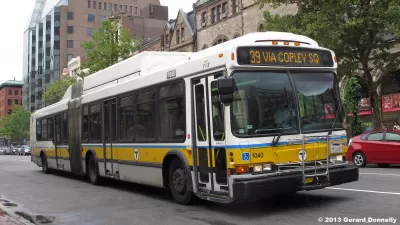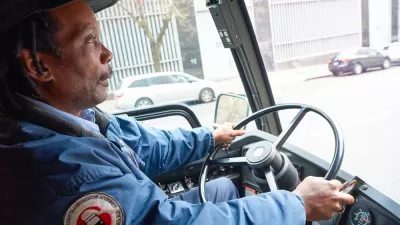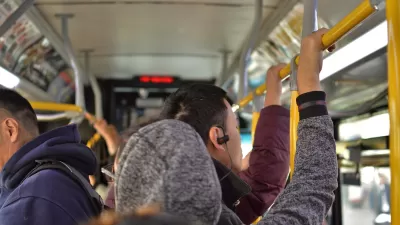Cities around the country are embracing free fares to lure riders back to public transit, but the ridership recovery continues to sputter.

Like other cities, Boston began offering free transit as a way to address historic inequities and boost faltering ridership during the pandemic. But despite the benefits of eliminating transit fares, that policy alone may not do as much to reduce carbon emissions or congestion as some advocates hope, write Lisa Kashinsky and Tanya Snyder in Politico.
Early analysis of Boston’s initial Route 28 bus initiative by both the city and the MBTA showed mixed results: Ridership was up and boarding was quicker during the first four months of the program. Yet only 5 percent of survey respondents said they would have taken a car if not for the free bus trip, undermining the claim that free transit is a climate initiative or a cure for urban congestion.
The authors point out two concerns about free transit programs: “First, while ridership on the free lines usually goes up, generally the boost comes from those who might typically bike or walk, rather than pulling people out of their cars”
“Second, riders — including those with low incomes — consistently say that what really matters to them is whether the bus comes frequently enough to be useful.” Sacrificing service for lower fares doesn’t ultimately serve the people most dependent on transit.
The other major question: long-term funding. Many recent free transit programs were funded by pandemic relief dollars. “When that dries up, it’s unclear where the money will come from to keep these programs rolling.”
FULL STORY: Mayors are wielding free transit to draw people back downtown. It’s not that easy.

Trump Administration Could Effectively End Housing Voucher Program
Federal officials are eyeing major cuts to the Section 8 program that helps millions of low-income households pay rent.

Planetizen Federal Action Tracker
A weekly monitor of how Trump’s orders and actions are impacting planners and planning in America.

Ken Jennings Launches Transit Web Series
The Jeopardy champ wants you to ride public transit.

New Jersey Lawsuit Targets Rent-Setting Algorithms
The state of New Jersey is taking legal action against landlords and companies that engage in what the state’s Attorney General alleges is illegal rent fixing.

Washington Legislature Passes Rent Increase Cap
A bill that caps rent increases at 7 percent plus inflation is headed to the governor’s desk.

From Planning to Action: How LA County Is Rethinking Climate Resilience
Chief Sustainability Officer Rita Kampalath outlines the County’s shift from planning to implementation in its climate resilience efforts, emphasizing cross-departmental coordination, updated recovery strategies, and the need for flexible funding.
Urban Design for Planners 1: Software Tools
This six-course series explores essential urban design concepts using open source software and equips planners with the tools they need to participate fully in the urban design process.
Planning for Universal Design
Learn the tools for implementing Universal Design in planning regulations.
Heyer Gruel & Associates PA
Ada County Highway District
Institute for Housing and Urban Development Studies (IHS)
City of Grandview
Harvard GSD Executive Education
Toledo-Lucas County Plan Commissions
Salt Lake City
NYU Wagner Graduate School of Public Service





























